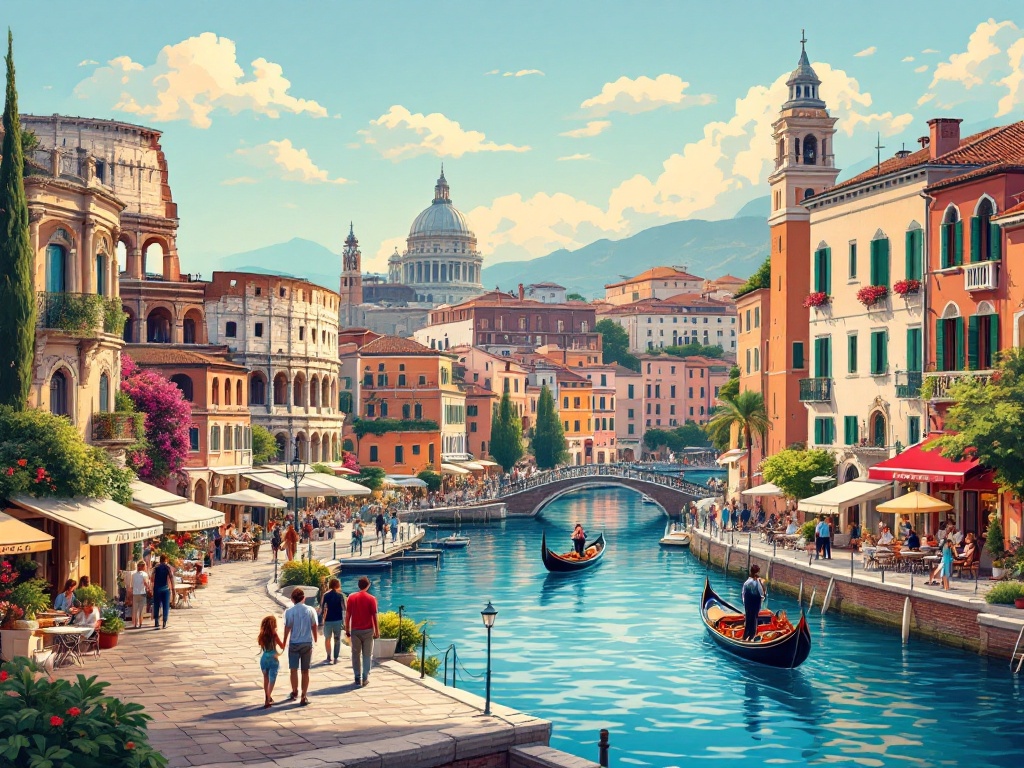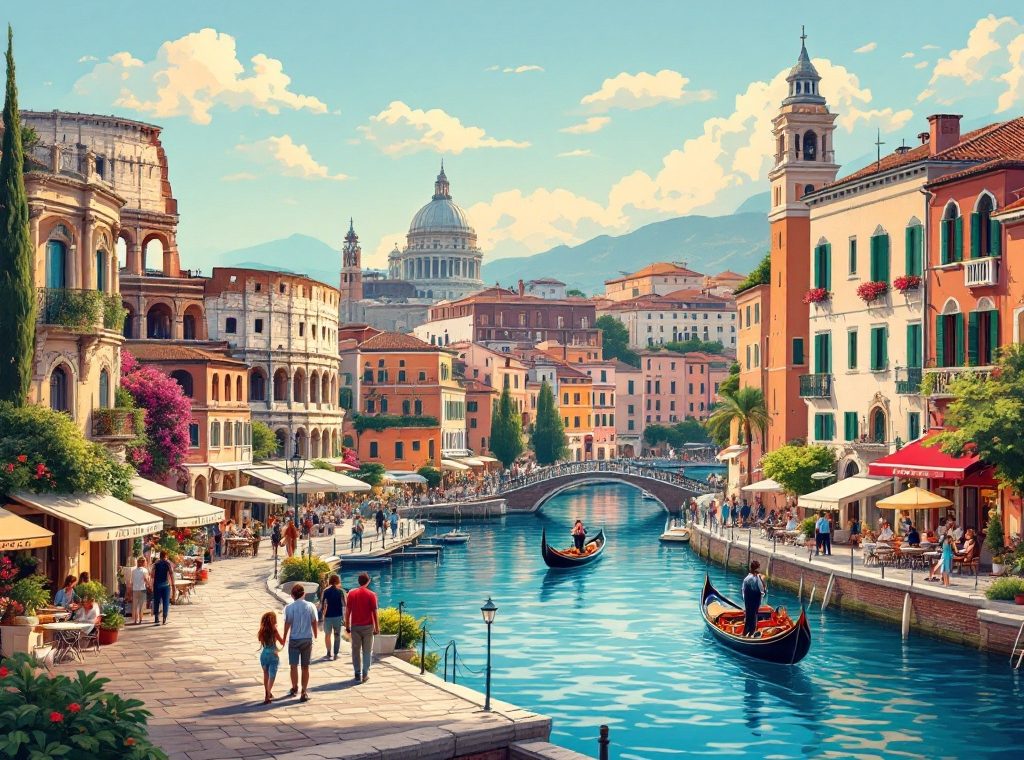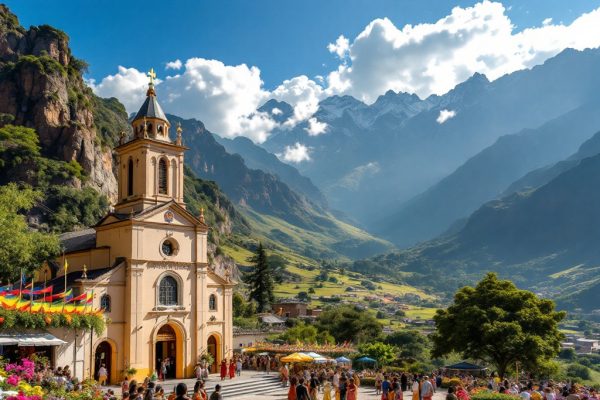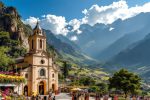Important Things to Know before Traveling to Italy
Dreaming of Italy? From Rome’s bustling streets to Venice’s tranquil canals, Italy offers diverse experiences. This comprehensive guide helps you plan your perfect Italian getaway. Learn visa requirements, navigate transportation like a local, understand cultural nuances, and pack for every season. Discover smart money-saving tips and choose the best accommodation for your style, whether a charming Airbnb or a comfortable hotel. Start your Italian adventure today!
Important information

- US citizens can travel to Italy visa-free for up to 90 days for tourism or business, but passports must be valid for at least six months beyond the return date. Longer stays require visas.
- Cash is essential for smaller businesses, markets, taxis, and tipping, while credit cards are accepted in larger establishments. Avoid dynamic currency conversion at ATMs; withdraw euros directly.
- Italy’s climate varies. North has cold winters, south is milder. Summers are hot and dry. Spring and fall offer pleasant temperatures but potential rain. Pack accordingly.
- Learn basic Italian phrases like “Buongiorno” and “Grazie.” Dress modestly when visiting religious sites. Be aware of regional etiquette differences.
- Italy offers diverse transportation: rental cars (be mindful of ZTL zones), efficient public transport (validate tickets), and taxis (ensure the meter runs or agree on a fare). Book in advance, especially during peak season.
Planning Your Italian Adventure
Italy offers a wealth of varied experiences. Explore bustling Rome and tranquil Venice, but don’t overlook the charming towns and stunning scenery. A single visit can’t capture it all, so plan ahead. For instance, understanding Italian customs beforehand will enrich your experience.
Visa and Passport Requirements
Traveling to Italy as a US Citizen? You can enjoy visa-free travel for up to 90 days, whether for tourism or business. Ensure you have a valid passport that expires at least six months after your return date. For stays exceeding 90 days, or for purposes like work or study, a visa is required. Contact the nearest Italian embassy or consulate for detailed visa information. Citizens of other countries should refer to their own nation’s travel regulations regarding Italy.
Travel Insurance Essentials
Travel insurance is a crucial aspect of trip planning, offering protection against unforeseen circumstances. It covers unexpected costs such as medical emergencies, trip cancellations, and lost baggage. While standard travel insurance policies offer valuable coverage for the average traveler, they might have limitations. If your itinerary includes adventurous activities like skiing or hiking, carefully review the policy details to ensure adequate coverage for these activities. Confirming comprehensive protection will help prevent unexpected issues from derailing your trip.
Booking Accommodations: Airbnb vs Hotel
Airbnb
Experience a unique adventure by staying in local homes with Airbnb, offering a genuine taste of the area. Airbnb often provides deeper cultural immersion. It’s perfect for travelers seeking authentic local experiences.
Hotels
Prefer a more traditional experience? Hotels offer amenities such as room service and daily housekeeping. If comfort and convenience are paramount, a hotel might be ideal for you. They provide a familiar and comfortable environment.
Consider your budget and desired location to select the perfect accommodation for your travel style. Both options offer distinct advantages.
Money Matters: Cash and Card Usage
In Italy, you’ll find a mix of payment preferences. While credit and debit cards are widely accepted in larger establishments like major stores and hotels, smaller shops and local markets often favor cash. Imagine charming family-run trattorias or vibrant street markets—euros are key to seamless transactions in these settings. Cash is also practical for smaller expenses, such as tipping or bus fare. Even taxis may prefer cash payments. Therefore, carrying some euros is always recommended.
Where cards are preferred
- Major stores,
- Hotels.
Where cash is king
- Smaller shops,
- Local markets,
- Family-run trattorias,
- Street markets,
- Taxis.
It’s always recommended to carry some euros for smaller expenses like tipping, bus fare, and purchases at local markets.
Currency Exchange and Euro Withdrawal
Managing your money wisely is crucial for a smooth Italian trip. ATM fees and exchange rates can impact your budget, so planning ahead is essential. ATMs are widespread and usually offer competitive exchange rates, but confirm with your bank about international transaction fees, which can add up. Decline dynamic currency conversion at ATMs; choose to be charged in euros, not your home currency, to avoid extra fees. A credit card without foreign transaction fees, like a travel card, can be a great option.
Tips for managing money in Italy
- Plan your finances in advance.
- Check with your bank about international transaction fees.
- Avoid dynamic currency conversion at ATMs and opt to be charged in euros.
- Consider using a credit card without foreign transaction fees.
Benefits of smart money management
- Maximize your spending power.
- Avoid unnecessary fees.
- Enjoy a stress-free trip.
Understanding the Coperto Charge
Italian restaurants often add a coperto, a per-person charge usually between €1 and €5. This covers bread, tableware, and service. The precise amount varies, so checking the menu or asking your server is recommended.
Weather and Seasonal Considerations
Italy’s diverse climate varies significantly from north to south. In the north, expect cold, snowy winters. The south and islands like Sicily remain milder. Summers across Italy are hot and dry, particularly in central and southern regions. Spring and autumn offer delightful temperatures ideal for exploring, but occasional rain showers are possible. Researching specific regional climates before your trip is crucial for packing and planning.The shoulder seasons (April to May and September to October) are generally the most pleasant times to visit Italy. These months offer a winning combination of comfortable weather, smaller crowds, and more affordable prices.
Summer (June-August)
- Light clothing,
- Swimwear,
- Sunscreen,
- A hat,
- Sunglasses.
Spring/Autumn (April-May & September-October)
- Light jacket,
- Sweaters,
- Long-sleeved shirts,
- Comfortable walking shoes,
- Rain gear.
Winter (November-March)
- Warm clothing,
- Heavy coat,
- Gloves,
- Scarf,
- Hat.
- For mountain visits: waterproof boots and thermal underwear.
Best Months to Visit Italy
For pleasant weather and fewer crowds, visit during the spring (April-June) or fall (September-October).
Summer (July-August) can be hot and crowded, while winter offers opportunities for skiing and festive markets.
What to Pack for Different Seasons
Summer in Italy
When packing for an Italian summer, prioritize light clothing such as shorts, t-shirts, and sundresses. Comfortable walking shoes are essential for exploring. Don’t forget sun protection: sunglasses, sunscreen, and a hat are vital. While days are warm, evenings can be cool, so pack a light jacket or sweater.
Spring and Fall in Italy
For spring and fall trips, packing is similar, with layers being key. Bring long-sleeved shirts, sweaters, and a light jacket or raincoat for unpredictable weather.
Winter in Italy
Winter in Italy requires a different approach. Pack warm clothes, including a heavy coat, scarf, gloves, and a hat. Waterproof boots are crucial for navigating rain or snow.
Understanding Italian Culture and Customs
Politeness is essential in Italy. Greet locals with “Buongiorno” during the day and “Buona sera” in the evening. Keep your voice at a reasonable level in public spaces. Tipping isn’t mandatory, but rounding up the bill or leaving small change is appreciated.Knowing basic Italian phrases enhances your trip, even though English is spoken in tourist areas. Italians appreciate the effort. Non-verbal communication, especially hand gestures, is important in Italian culture.Dress modestly when visiting religious sites. Cappuccinos are typically a breakfast beverage. Avoid negative regional comparisons. Embrace “il dolce far niente,” the sweetness of doing nothing, reflecting Italy’s relaxed pace of life.
Social Interactions and Etiquette
Italians value warm greetings, so introduce yourself properly and maintain eye contact. Hugs and cheek kisses are common, even upon first meeting.
Italians communicate expressively, often using hand gestures and varied tones.
Mealtimes are important social occasions for Italians where food is savored and conversation flows. Observe table manners and wait for the host to begin eating.
Italians dress stylishly, even casually. A small gift like wine or flowers is a thoughtful gesture when visiting someone’s home.
Passionate about their culture, Italians love sharing it with visitors. Showing genuine interest in their customs will be greatly appreciated.
Remember, etiquette can vary regionally, so asking a local for guidance is always helpful. Learning a few basic Italian phrases can also enrich your experience.
Language and Communication Tips
Enhance your Italian adventure by learning some basic Italian phrases. Even a little effort can greatly impress locals, who appreciate the attempt.
Simple Greetings
- Buongiorno (Good morning/day).
- Buonasera (Good evening).
Essential Phrases
- Grazie (Thank you).
- Prego (You’re welcome).
Phrasebooks and language learning apps can quickly teach you these and other helpful expressions. Online resources are another excellent tool. While communication barriers might occasionally arise, non-verbal cues, such as gestures and pointing, can bridge the gap. For more complex situations, a dictionary or translation app on your phone can be invaluable.
Cultural Differences to Be Aware Of
Navigating Italian queues can be an interesting experience. Some places use numbered tickets, like delis, while others operate on a more casual, “whoever’s next” system. Observing local customs is crucial to avoid accidentally cutting in line. Italians value personal space, yet light physical touch during conversations is common. Maintaining eye contact shows respect and attentiveness. Italians are known for their expressive communication style, often using hand gestures and animated facial expressions. Meals are important social events. Lunch is usually the largest meal of the day, while dinner may be a lighter affair, like a simple pasta dish. These customs and traditions contribute to the rich tapestry of Italian culture.
Navigating Transportation in Italy
Traveling in Italy offers several transportation options. For independent exploration, a rental car provides flexibility, allowing you to discover the scenic countryside at your own pace. However, be prepared for narrow roads and assertive Italian drivers. Alternatively, Italy boasts an efficient public transportation network. Affordable S.I.T. buses and trains connect numerous cities and towns, offering a convenient and cost-effective way to travel. Taxis are also readily available for shorter distances. Understanding local customs can enhance your travel experience, and booking transportation in advance is often recommended, especially during peak season.
Driving in Italy and Rental Car Tips
Driving in Italy offers incredible freedom to explore charming towns and scenic landscapes. However, understanding local driving customs and regulations is crucial for a smooth and enjoyable trip. Before you hit the road, familiarize yourself with these essential tips:
Understand Italian Traffic Laws. Familiarize yourself with Italian traffic laws, which may differ significantly from those in your home country. This will help you avoid unintentional violations and ensure a safer driving experience.
Review Your Rental Agreement. Carefully review your rental agreement, paying close attention to insurance coverage, any limitations or restrictions, and the procedures for handling accidents or breakdowns.
Consider an International Driving Permit. If your driver’s license isn’t in Italian, obtain an International Driving Permit (IDP). This will ensure that your driving credentials are easily understood by local authorities.
Beware of ZTL Zones. Be aware of ZTL (Zona Traffico Limitato) zones in Italian cities. These restricted traffic areas often have limited access, and entering without a permit can lead to hefty fines. Research ZTL zones in your planned destinations and understand the regulations.
Plan for City Parking. Parking in Italian cities can be challenging and expensive. Research parking options in advance, consider accommodations that offer parking, or explore public transportation alternatives within city centers.
Be Prepared for Tolls. Be prepared for tolls on the Autostrade, Italy’s main highway network. Have cash or a compatible electronic payment method ready to avoid delays at toll booths.
Public Transport: S.I.T Bus and Train Travel
Traveling across Sicily is easy thanks to the comprehensive S.I.T. bus and train network. Trains efficiently connect major cities such as Palermo, Catania, and Messina. Buses reach the charming smaller towns and villages throughout the island. Remember to validate your ticket when you board. For extra savings, consider a city card for discounts on attractions and services.
Taxi Booking and Etiquette
Catching a cab in Italy is easy. You can hail a taxi with a lit “Taxi” sign. Taxi stands are located at airports, train stations, and main city squares. For advance bookings, use apps like “itTaxi” and “Free Now”, or call a local radio taxi service. Tipping isn’t required, but rounding up the fare or adding a small amount for great service is a nice gesture. Always ensure the meter is running, or agree on a fare beforehand.
Practical Tips for Travelers
When visiting churches and the Vatican, dress respectfully. Cover your shoulders and knees. Avoid shorts, tank tops, and revealing attire. This demonstrates respect for these sacred spaces.
For luggage safety, use tags with your contact information. Secure your valuables in a money belt or hidden pouch to protect important documents and cash. Stay aware of your belongings at all times.
Dress Code for Churches and the Vatican
When visiting churches and the Vatican, dress respectfully by covering your shoulders and knees.
Luggage Identification and Safety
Personalize your luggage with vibrant tags and straps, or add a touch of individuality with ribbons or stickers.
Keep valuables like passports, electronics, and jewelry secure in your carry-on. Always be mindful of your surroundings, especially in bustling areas like train stations and tourist attractions, to protect your belongings.

















